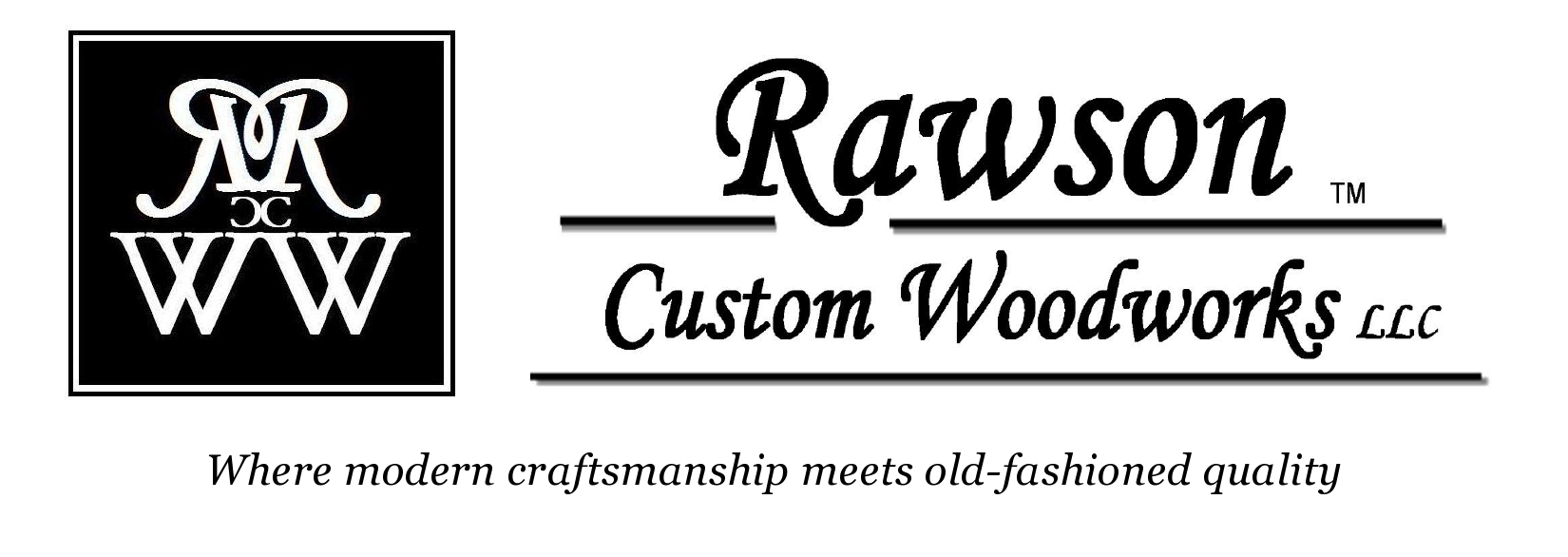

July 12, 2013
Rawson Custom Woodworks, LLC is a completely custom woodworking shop. Basically, that means we make many different types of pieces, not just one standard set. We make pieces that are complex, and we make pieces that are simple. One simple piece that we often make is kitchen cutting boards.
To make a cutting board, the first thing we do is collect our materials. Cutting boards are a glue-up of smaller pieces of wood. The reason for this is because if you used one large piece of wood, the board would eventually twist or warp. Because of the constant changes of water moisture in the air, all wood expands and contracts. This movement is what causes a single piece of wood to warp or twist. However, if you use the glue-up technique, the board will remain stable. This is because in a glue-up you connect smaller pieces of wood together with wood glue. This forms a "wood chain." Each link in the chain is stronger together than if it were apart. Each link pulls against the next link and will keep the next link from warping or twisting.
When we make a glue-up, we do not use completely uniform pieces of wood. All of the pieces are roughly the same length, but they are not the same width. This is for the aesthetics of the wood. You can make a glue-up with completely uniform pieces of wood, but by using different pieces, the color and grain of each piece will form unique patterns in the glue-up.
In the photo below, we have collected our material. For this cutting board, we are using small pieces of maple. We have stacked the pieces horizontally to our desired width, and as you can see, the pieces are roughly the same length but they vary in width.
Before we actually glue the pieces of maple together, we square the edges of each piece to ensure a stable and strong glue-up. To square the edges, we first square one edge on our jointer, and then we square the opposite edge using our planer. These two squared edges form a perfect 90 degree angle.
Once both edges are squared, we line up our maple pieces (with the squared edges facing each other) on top of wood clamps.
After we line up our pieces, we put a bead of wood glue along each squared edge.
Then we clamp the pieces together. We stagger our clamps on each side to put an even amount of pressure along the glue-up. As we're clamping the glue-up, we pull or push each piece to make as flush of a surface on one side of the glue-up as possible. This will make one side of the glue-up fairly flush and the opposite side uneven.
It takes several hours for a glue-up to fully dry, so typically, we let our glue-ups dry overnight. The next step once the glue-up has dried is to scrape off any extra glue that has seeped out during the drying process. This is to ensure that the flush side of the glue-up remains flush. If you do not scrape off the excess glue, when you run the glue-up through the planer (which is the next step) the sides will be uneven because the dried glue will tilt the board and cause the planer to cut the sides unevenly.
After the dried glue is scrapped off, we run the glue-up through our planer with the flush side down and the uneven side up, as it is in the photo below. We then flip the glue-up over and run the flush side through. After that, we alternate running each side of the glue-up through the planer. By running the glue-up through the planer this way, we can make both sides of the glue-up perfectly flush.
Next, we take the glue-up over to our chop saw to square the ends.
We then sand the glue-up.
We also sand the edges of our cutting boards to give them a beveled edge. This edge adds a finished look to the cutting board. For certain cutting boards, we also use a router to add a groove to the edges, which allows liquids to run into the groove instead of off the board and onto the counter.
We then finish the glue-up with a special food safe sealer.
The final step in making our cutting boards is to add rubber pads to the bottom corners. The pads help the cutting board grip the counter top and not slide around while it is being used.
And here is our completed maple cutting board.
Thank you for joining us on this shop tour. Here is a small sample of the many different types of cutting boards we make.
At Rawson Custom Woodworks, LLC no project is too small.
Whether you need a new kitchen or just a new cutting board for your kitchen, we can facilitate your project needs. Call us at
815-332-9222
or email us at
info@RawsonCustomWoodworks.com.


